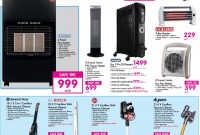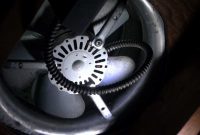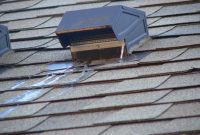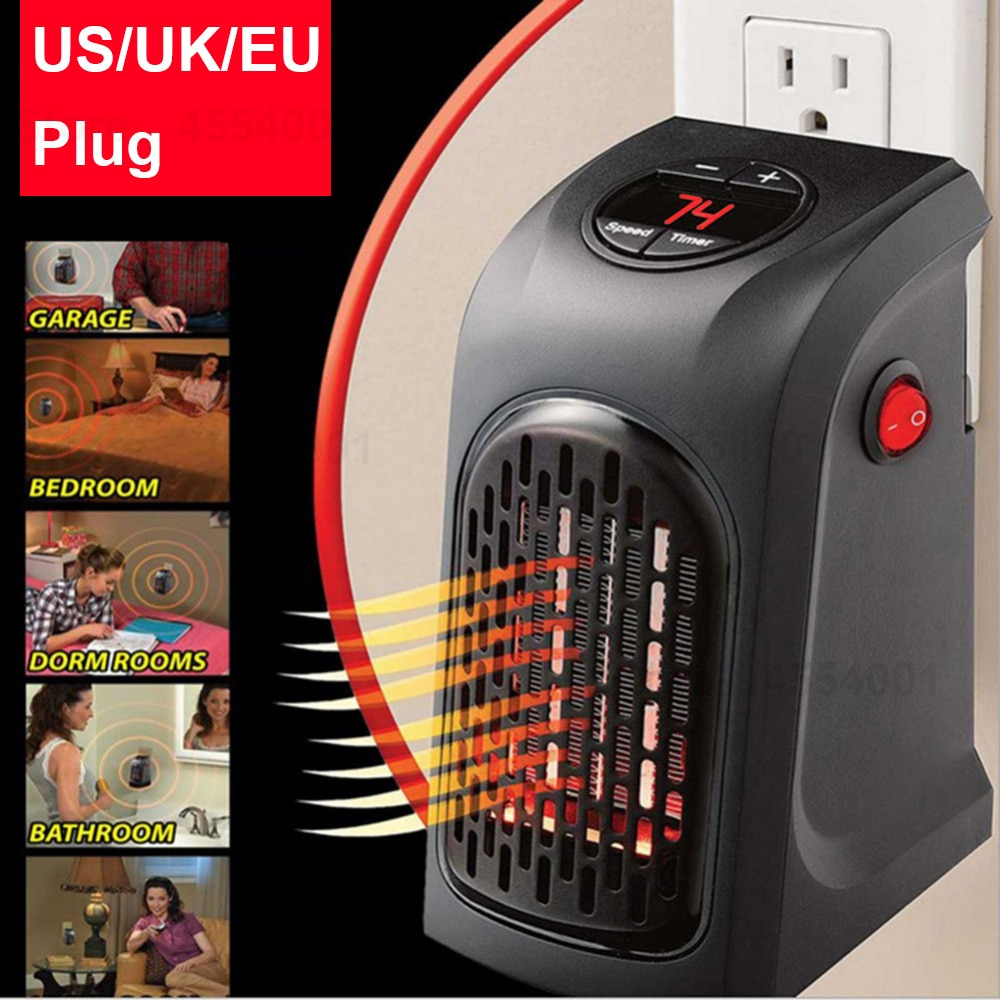 Mini Fan Heater Desktop Electric Heater Household Wall inside measurements 1000 X 1000
Mini Fan Heater Desktop Electric Heater Household Wall inside measurements 1000 X 1000Small Electric Fan Heater – Hunter ceiling fans will be without a doubt the top you should buy, ideas have build everything you will need to understand ceiling fans just before purchasing, please keep in mind there are more ceiling fan manufacturers around who copy Hunter roof fan designs but they’re no place close to as good, materials they normally use are certainly not as good quality and so they could not copy hunter roof supporters patents for example whisper-wind and wobble-free technology, no-one otherwise can match the Hunter life-time warranty about the motor both, so although ceiling supporters may look “just being a Hunter, ” remember most ceiling fans aren’t good quality. Most Hunter ceiling supporters have a very reverse option that’s particularly important to relieve heating charges in winter, heated air might be directing as a result of where it can be required spinning the ceiling supporter clockwise. Some points to think about when purchasing a ceiling supporter: How much air is in fact getting distributed? How efficiently does the fan move air? Just how quiet or noisy may be the fan? Will the fan move? How long will the fan previous? How durable may be the carry out? Will the maker stand behind the warranty? A ceiling supporter that appears nice but actions little air is often a comfort and ease to nobody. One in the secrets of proper air movements is blade pitch. The greater the pitch-the angle in the blade- the higher mid-air movement supplying the blade pitch continues to be effectively harmonized using the motor. In contrast to Hunter some manufacturers unintentionally avoid materials and do not use sufficient or perhaps powerful enough applications to aid proper blade try to sell. So they compromise in blade pitch, sacrificing appropriate air movement to relieve the worries on undersized or under-powered motors. Many fans also have extra thin blades to relieve cost. The reduced cutting tool surface means reduced weather motion.
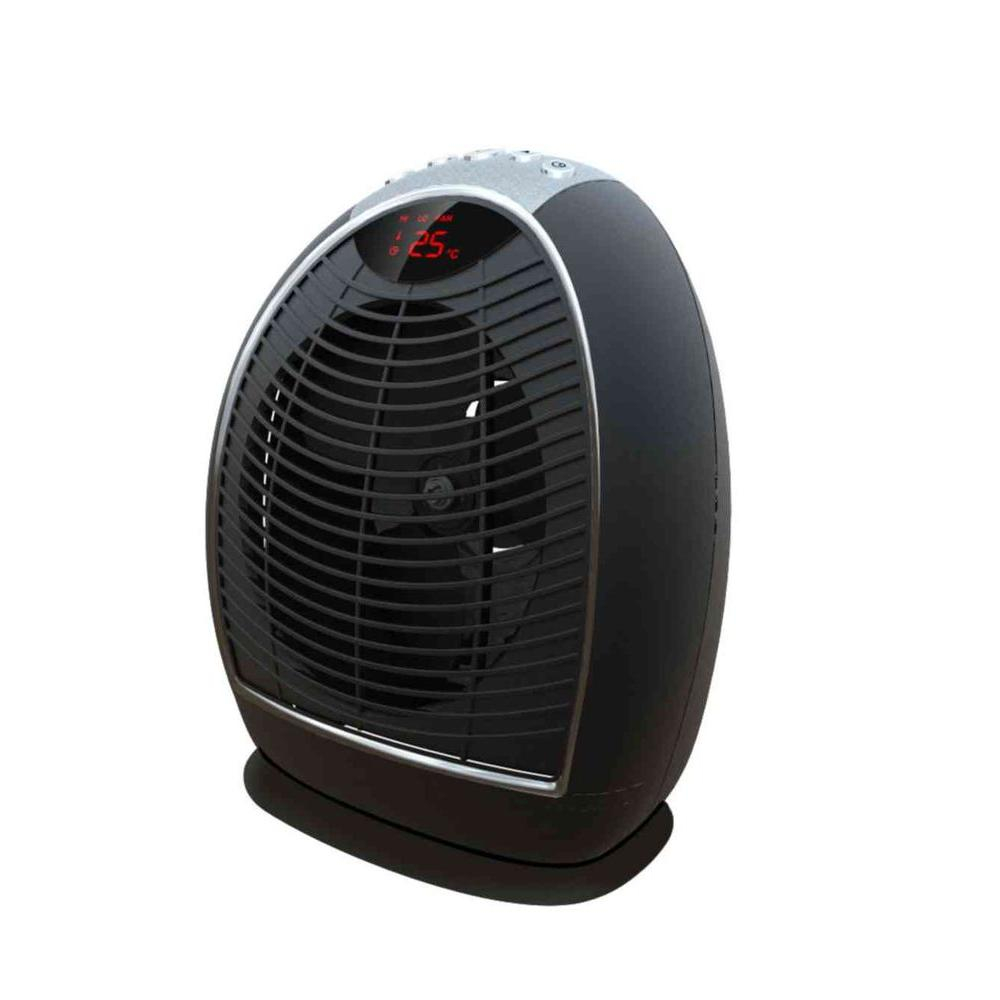 Pelonis 1500 Watt Digital Fan Forced Electric Portable Heater inside proportions 1000 X 1000
Pelonis 1500 Watt Digital Fan Forced Electric Portable Heater inside proportions 1000 X 1000Why Many Admirers Are Less Efficient? The volume of energy a lover consumes as well as the level of air the supporter moves determines the fan’s overall efficiency. Small , low wattage motors might use minimal energy, in addition they move hardly any air, leading to very ineffective fans, Hunter fans are made to shift lots of weather. Why Many Fans Will be Noisy? An electrical humming produced every time a ceiling fan is certainly running is often the consequence of poor engineering design along with an insufficient accuracy manufacturing. Some manufacturers work with generic, economical ball bearings to relieve cost, though these are generally a standard way to obtain operating noises. A deficiency of proper damping between metal parts may also create and intensify noises, as can the usage of extra slim sheet metal motor and mounting system parts. Seeker fans don’t use anything but the top components offered. Why Many Admirers Wobble? Many factors will produce fan wobble. Substandard cutting tool materials and improper cutting tool sealing can produce blades that absorb moisture and warp-a prime way to obtain wobble. Rotor blades that aren’t matched in carefully weighed and stable sets may also wobble. Sporadic blade supports can make running levels of pitch (blade angle), throwing a lover into a great unbalanced wobble. And inadequately manufactured motors have brake discs that could easily get rid of harmony, generating wobble in the very heart in the fan. Economical mounting systems with green fasteners may also bring about move. Hunter fans use a trademarked wobble free canopy which suggests Hunter fans will always be right. Common Reasons Substandard Admirers Break Down Prematurely? Motor size and blade pitch aren’t specified and matched effectively. Improperly placed on /off take chains may become faulty and stay brought out in the housing. Inferior quality, testing, manufacturing and inspection strategies send sub-standard fans to showcase. Defective engine windings can result in electrical pants inside motor. Low quality supporter bearings could possibly be “shielded” on the one hand only, allowing dust to go in and cause premature failing. Economical materials, poor anatomist, and substandard manufacturing functions are employed to create “bargain” supporters. For what reason Brass Finishes Will be Not really Alike? In the beginning most brass finishes look good. In that case tarnish and brown spots commence to appear. You may well possibly spot the brass about the admirer can be a different colour compared to the light kit you only added! Quality brass along with other iron finishes will include a compilation of grinding and buffing steps between multiple plating processes. To help identify the caliber of a plated carry out, glance at the surface closely meant for scratches or unevenness of finish. Does the counter location without difficulty? If so , stay away from the fan. Can you really feel an even protective coating? That’s a signal in the type of quality you can find inside famous Hunter Smart Brass Finish. What may be the minimum height I need within my room to set up a lover? Safety standards declare that the min height in the floorboards towards the bottom in the blades has to be 2 . 3m or perhaps 7ft 6″, consider Seeker Low Profile ceiling fan should you have a very low ceiling, only actually ensure that these are over head height. Why a Hunter ceiling fan guarantee makes a difference? Hunter backs it is fans having a life span limited engine warranty, and backs that warranty with nearly a hundred and twenty years inside ceiling supporter business. No other company has that type of record to face on. So you have the satisfaction of knowing you may have the top -backed warranty inside organization!
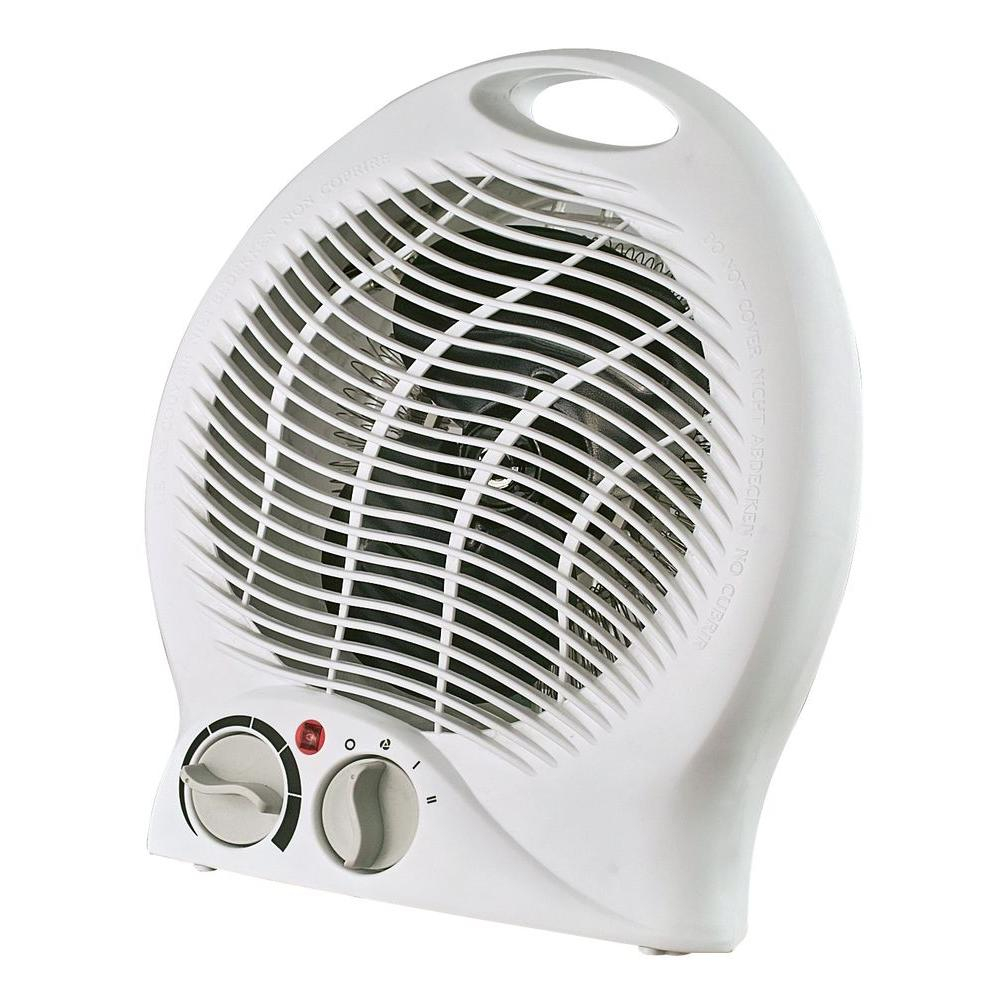 Optimus 750 Watt To 1500 Watt Portable Fan Heater With Thermostat regarding measurements 1000 X 1000
Optimus 750 Watt To 1500 Watt Portable Fan Heater With Thermostat regarding measurements 1000 X 1000How much air perform ceiling fans move? Threshold fan air movement is certainly measured in CFM, or possibly cubic feet each and every minute. The greater the CFM, greater air that’s being moved. The air shifted from the fan results in a breeze chill effect that creates you really feel convenient in the warm place. There is really a direct romantic relationship among air movement and comfort – greater weather moved, the higher the wind cold effect. Hunter fans generally move more air than competitive models as a consequence of custom-engineered applications and blades pitched on the maximum possible angle. What may be the difference from your 4 – 5 blade ceiling fan? The key difference from your 4-blade and 5-blade fan is looks, with a few additional wind noises connected with 5-blade fans. For the given motor, a 4-blade fan will move more weather than the usual 5-blade fan. The 5th blade puts extra drag about the motor, reducing the RPM in the cutting blades, which decreases the CFM. All Hunter fans, if four or five blades, focus on optimum air delivery How do I determine what size fan to acquire — there are numerous sizes available? You should select the right size supporter for any room to obtain ideal looks, comfort and personal savings. If the fan is way too tiny for your room, it won’t maneuver enough air to make you really feel comfortable. If the fan is way too big, it may move an excessive amount of air. Hunter recommends this: 100 sq foot 30″-42″ Ceiling fan, 400 sq foot 48″-54″ Ceiling supporter, Larger rooms use a minimum of 56″ Ceiling fan. For what reason do some fans need engine oil while others usually do not? The Seeker Original includes a very one of a kind motor which utilizes a great oil-bath lubrication system. This system retains the key bearings lubricated all the time, for quiet operation and long-life. This is part in the reasons why this fan includes a limited lifetime motor warranty. The majority of fans use motors that usually do not require oil. What precisely makes the Hunter Original thus unique inside market when compared with all the fans? The Seeker Original may be the most unique roof fan about the market, which has a design that extends back towards the turn in the last century. Tossed iron is employed inside engine housing construction to more efficiently draw heat away in the electro-mechanical windings; heat is really a major enemy of electro-mechanical motors. The extra weight in the cast-iron construction also cuts down on prospect of fan wobble. The motor can also be greater than another ceiling fan, which makes it the strongest motor available. This enables the blades to get frequency in a 15 degree perspective, which produces greater weather movement with less noises. The oil-bath lubrication system protects the key moving elements in the motor, and stretches living in the motor. Added up, these unique design components make a powerful, quiet supporter that’s backed by way of a limited lifetime warranty. How do supporters cool the space – would they actually lower the temp? A roof fan lowers by setting up a wind cold effect; it doesn’t lower the space temperature. Wind chill impact makes you really feel cooler by simply accelerating the evaporation of perspiration onto the skin. It may be the feeling you will get once you open up of the question in the moving car. If you have a very ceiling supporter in the room whose temperatures is 80 degrees, operating the fan can make a wind chill effect that creates you really feel as though the temperatures is 72 degrees. When ever employed in conjunction by having an ac, a ceiling fan can decreased energy costs, since you can arranged the thermostat of your respective air conditioning unit in a higher temperature. Can your ceiling fan provide in winter for virtually any beneficial purpose? A ceiling fan may help lessen energy consumption in winter by simply as much as 15%. The temp in the air in a very heated up room varies in levels; mid-air nearby the threshold is hotter compared to the air nearby the floorboards, because heated air rises. A ceiling fan may help thrust the warmer air that’s trapped nearby the ceiling down again into the space, thus de-stratifying the layers of heated air. As a result, the heated air is distributed where it can be needed, along with the furnace won’t overwork to warm the space. To properly de-stratify a warmed room, the ceiling fan must be work in the clockwise direction. This kind of pushes mid-air facing the ceilings and along the wall surfaces, to carefully re-circulate the heated air without setting up a cooling wind turbine chill effect.
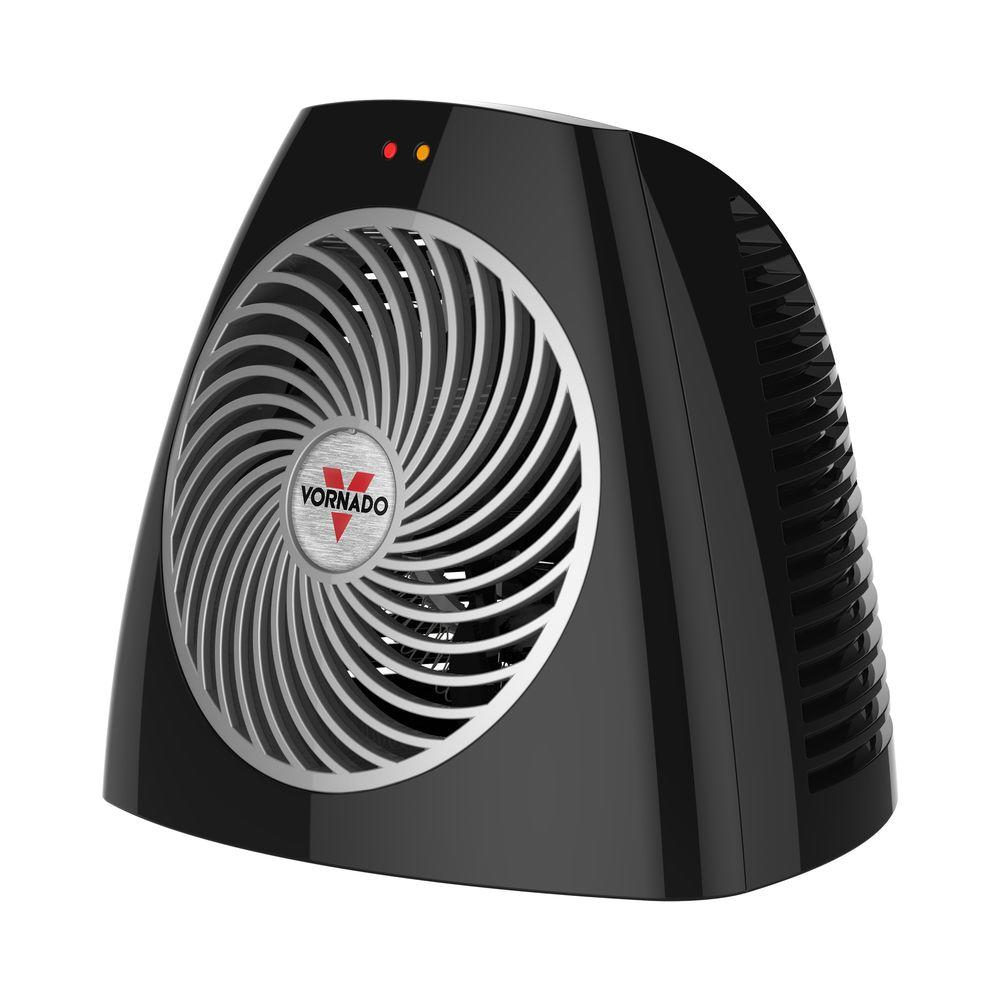 Vornado Vh202 750 Watt Electric Portable Vortex Heater throughout size 1000 X 1000
Vornado Vh202 750 Watt Electric Portable Vortex Heater throughout size 1000 X 1000How much electric power will a lover use? Typically, a ceiling fan run using broadband will consume much less power than the usual 100-watt bulb. How much can We expect you’ll save in heating or cooling costs? A roof fan can help to conserve as much as 95% on cooling costs for any new install and 47% by using an existing air cooling program. It may also save as much as 15% on heating costs. Savings vary according to strength rates. How easy is really a ceiling fan to setup? Most of the people can get a mason to setup a ceiling fan, it might be a DIY project nonetheless please remember you are going to want to get in a position to: Choose a 2″ x 4″ and other appropriate support inside roof, Drill holes and mount timber screws, Identify and hook up electrical wires, Lift up the fan (most weigh up below 8kg). What is protected from the fan warranty — what makes the Hunter guarantee rival other fan business warranties? Most fan warranty information are limited warranties that go over the motor parts for your said life in the warranty; that’s, a 20-year warranty covers the motor parts for twenty years. Labour for your motor is normally covered for 1-year, as well as parts and labour meant for all the components in the supporter. All Hunter fans will be backed by way of a “limited life-time motor warranty. ” Most of all, Hunter may be the only supporter company with 115 many years of experience behind its extended warranties. Can my fan end up being adjusted by remote device? Many ceiling fans might be fine-tuned by having an accessory remote device offered separately in the fan. Actually controllers can definitely boost the functionality and operating versatility of ceiling fans as many involve one-touch multiple speed settings, quick fan “off” operation, and huge selection light dimming — all possible in the ease and comfort of your respective favourite chair or perhaps bedside table. Ceiling supporter and light-weight controllers can easily be mounted either using the fan during new installations or in fans which has been previously mounted as well as in use for quite a while.
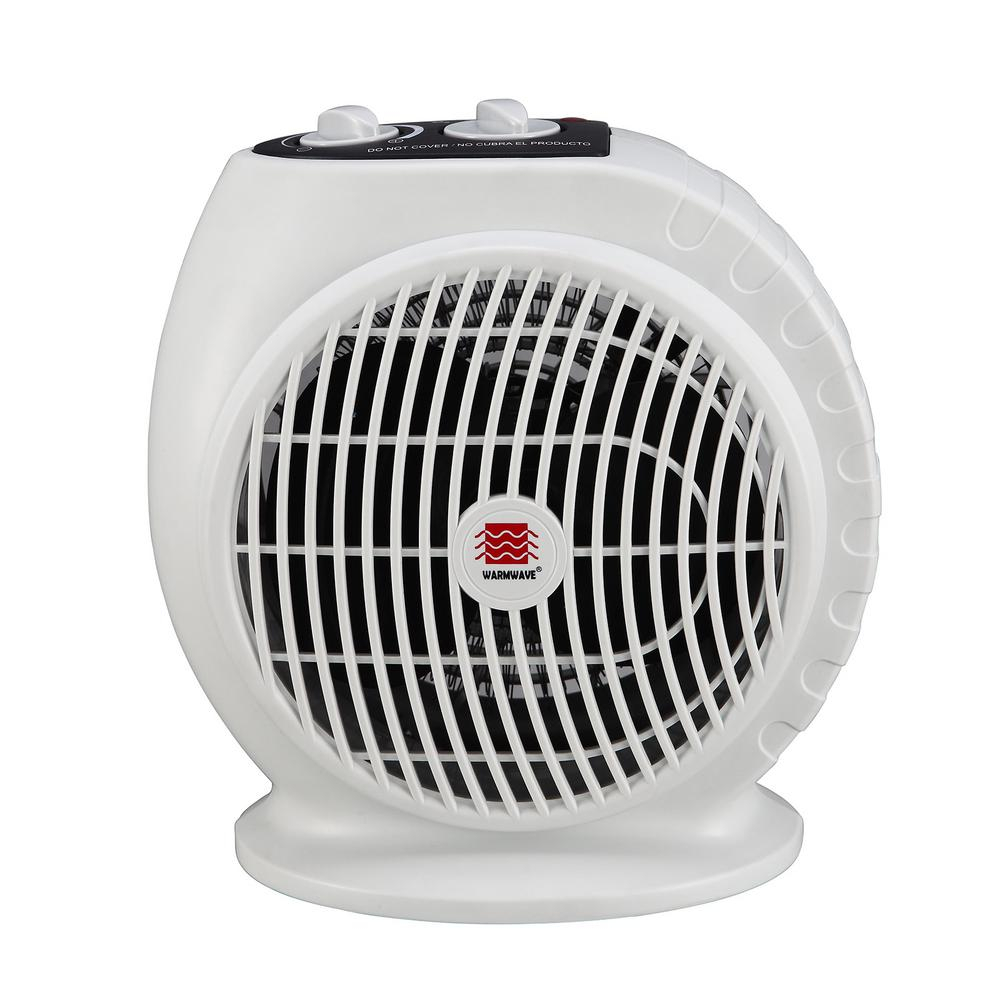 Warmwave 1500 Watt Electric Fan Portable Heater throughout proportions 1000 X 1000
Warmwave 1500 Watt Electric Fan Portable Heater throughout proportions 1000 X 1000The installation is a simple, do-it-yourself job and won’t require virtually any professional wiring. Remote control products add a handheld transmitter meant for sending commands towards the supporter plus a receiver which both conceals in the fan canopy panels or mounts just underneath the ceiling. Remote controls can easily operate the fan or perhaps light reliably as much as 45 feet away in the supporter. Can ceiling fans end up being installed on angled or perhaps high ceilings? Yes, roof supporters might be placed on angled or perhaps vaulted ceilings by utilizing a lover canopy (the “cap” obvious closest towards the roof which provides coverage for the electrical box) which in turn continues to be built to allow for sloped ceilings. Many quality supporters includes this kind of flexible canopy, just like Hunter’s Installer’s Choice and HandsFree Canopy systems, however, if not included using the fan in original purchase, accessory canopy panels adapters can be bought separately in stores. What length drop fly fishing rod should I use with my fan? Will the supporter be at risk of wobble easily work with a drop rod? Discover chart above. A general blueprint for calculating drop fly fishing rod duration is: ceiling height in feet minus 9′ sama dengan drop rod length. This kind of formula is based about the fan-to-floor distance of 8 legs plus 1 foot for your sizing in the fan. So should your ceiling elevation is 12 legs, you will need a 3 foot drop fly fishing rod as a way to properly standing the fan 8 legs in the floor. Using long-length drop rods for supporter installs actually help keep in place fans reducing the prospect of wobble. Think of your cheap grandfather clock pendulum and it is slow, hefty swing versus a lesser time clock pendulum which has a fast, unsteady swing. Weight and size combine to generate stability, lowering wobble, whether it can be in the ceiling fan or perhaps a time clock pendulum. Why does my supporter “hum” when We mounted a flexible speed (solid state) control? Most quality roof fans are handled by way of a certain form of electro-mechanical control system called capacitors. Capacitor electronics in roof supporters create distinct speed “steps” like high, medium, and low. Capacitors control the fan speed inside a manner in which won’t make a hum. Variable supporter speed controls, which produce a speed control “range” right from low to high, will be operated by simply solid condition electronics. Variable controls can make a hum since they control the fan’s speed in the different method. For peaceful fan procedure, capacitor type fan controls are appropriate for most roof fan installs. Can a ceiling supporter plus a light kit end up being controlled in the same wall membrane switch? The answer here depends upon how your wall transition is now wired. If you have a very single wall switch with two wires (one dark-colored, one white), the reply is “no” if you don’t obtain a control created specifically for such a switch (Hunter offers three models). The answer then is “yes” should you have a very 3 wire set-up inside solitary wall switch and obtain a more common, dual control which will function a lover and light-weight independently from just one switch. Having a mason purchase a third line might be expensive. What may be the big difference in having a roof fan installed close towards the ceiling versus with a drop rod? For maximum functionality and greatest energy personal savings, ceiling fans must be mounted approximately 8 to on the lookout for feet higher than the floor. Off shoot drop rods are utilized to effectively position fans from roof heights more than 8 legs. For example , a 12 feet ceiling would want a a few foot drop fly fishing rod to put the fan in main feet (one foot has to be allowed for your distance in the top in the fan engine towards the switch housing lower side.
